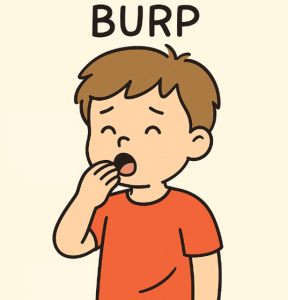
How Small Acts Spark Big Change in Child Health
In a small Tasmanian town, a mother sits in a community center with her toddler on her lap. Around her, other parents share stories—of sleepless nights, of figuring out meals from what’s available, of finding comfort in each other’s company. No researchers with clipboards. No complicated jargon. Just lived experience—real, messy, hopeful.
What emerged from these conversations would soon ripple across three communities in northwest Tasmania: a new way to see family health not as something done to people, but something grown from within.
This is the story of positive deviance, and how it’s reshaping how we help children thrive in their first 1000 days.
Why the First 1000 Days Matter
Public health experts often describe the first 1000 days—from conception to a child’s second birthday—as the single most important window for lifelong health. Nutrition, bonding, and nurturing care during this time shape brain development, immune systems, and even future educational success.
Yet across the world, interventions in this period too often rely on top-down programs, expensive campaigns, or short-term aid. What if, instead of looking outward for solutions, communities looked inward—to the parents and caregivers who were already succeeding despite the odds?
That’s the radical simplicity of positive deviance (PD): find the people who thrive under the same constraints as everyone else and learn what they’re doing differently.
The Power of Ordinary Success
The concept isn’t new. In the 1970s, researchers in Vietnam found that some of the poorest mothers had well-nourished children. Their secret? Adding tiny shrimp and leafy greens—cheap, local, and previously overlooked—to their children’s rice porridge. When others adopted these habits, malnutrition rates plummeted.
Since then, PD has improved infection control in hospitals, enhanced maternal health in Egypt, and reduced stigma surrounding mental health and chronic diseases.
Its beauty lies in what it isn’t: a costly import or an expert-driven model. PD assumes that the seeds of progress already exist inside a community. The task is to find them, nurture them, and let them spread.
Turning Stories into Science: The Northwest Tasmania Example
Researchers from the University of Tasmania and the community group Burnie Works put this philosophy to the test in the Northwest First 1000 Days (NW F1D) Project.
Rather than starting with surveys or interventions, they started with stories. Over fourteen storytelling workshops were held across Burnie, Devonport, and Circular Head—rural areas facing economic decline, limited services, and health inequities.
Parents gathered in safe, creative spaces—sometimes over art projects, sometimes while children played—to share what helped them get through the hardest parts of early parenthood. Each conversation followed three stages:
- Storymaking: shaping lived experiences into narratives,
- Listening and holding: developing empathy and trust,
- Storypolishing: refining insights to share publicly.
These weren’t token listening sessions. They were acts of co-creation—parents discovering that their experiences were data, that their stories were evidence.
A mother from Devonport put it best:
“This project wasn’t about ticking boxes—it was about connection, change, and community. We’re seeing people find their voices and step into spaces they never thought they belonged in.”
From these sessions, the team identified “positive deviants”: parents or caregivers who had found effective ways to nurture and connect with their children despite financial strain, isolation, or lack of support. Some built informal networks of mutual aid; others developed routines for shared meals, creative play, or calm bedtime rituals.
Their strategies—small, simple, local—became blueprints for community-wide programs.
From Insight to Impact
Through these storytelling hubs, parents didn’t just share wisdom—they shifted power. They became informal leaders, teaching through example and helping schools and social services see families as partners, not clients.
The ripple effects were visible:
- New partnerships between schools, health services, and parents.
- Higher engagement in early-childhood programs.
- Increased confidence and self-efficacy among caregivers, especially mothers.
- Locally created materials (like storyboards and art exhibits) spreading awareness about the “first 1000 days.”
In practice, the deviant behavior wasn’t about defying norms—it was about redefining them. Parents became co-designers of solutions. Health workers became facilitators of community knowledge.
As one participant reflected:
“F1D has planted seeds—we just need help to keep watering them.”
What This Means in Practice
For practitioners and policymakers, the lessons are clear:
For local health departments
- Identify and amplify local “bright spots” instead of importing generic programs.
- Use participatory storytelling to uncover hidden practices that work.
For NGOs and community organizations
- Shift from service delivery to co-creation. Let families lead the agenda.
- Integrate PD into existing maternal-child health or nutrition initiatives.
For funders and policymakers
- Support long-term infrastructure for community hubs and storytelling initiatives.
- Pair PD insights with structural reforms—access to food, housing, and childcare—to avoid placing all responsibility on families.
Barriers and Cautions
Positive deviance isn’t a cure-all. The approach can unintentionally romanticize resilience while ignoring systemic barriers—poverty, racism, and underfunded health systems—that limit how far individuals can go on their own.
Ethical storytelling is also essential. Highlighting success stories must respect privacy and avoid tokenism. Stories should empower, not exploit.
Finally, PD must be methodologically rigorous. Researchers urge clearer criteria for identifying “positive deviants,” consistent use of comparison groups, and careful documentation of community engagement. Without rigor, inspiration risks becoming anecdote.
A Community-Led Future
The Tasmania project shows what’s possible when expertise flows both ways—when academic research meets lived experience. By listening first, professionals learned that thriving families weren’t exceptions; they were teachers.
Positive deviance offers a hopeful blueprint for a child-inclusive society: one where families are not passive recipients of programs but co-authors of their own success stories.
The question for public health isn’t whether these local insights exist—it’s whether we’re willing to listen.
Reflect & Discuss
- How might your organization uncover “positive deviants” in your community?
- What structures or assumptions might prevent their insights from being heard?
- How can funders balance celebrating community ingenuity with tackling systemic inequity?



